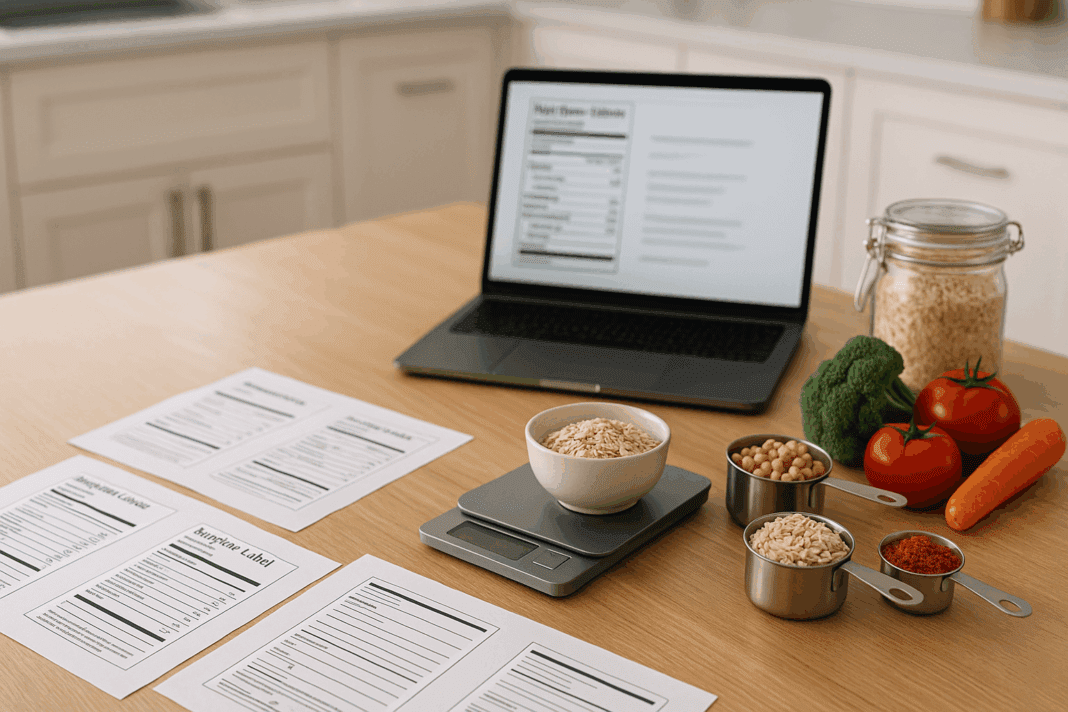Creating accurate nutrition facts labels at home may seem like a task reserved for food manufacturers or regulatory agencies, but in reality, it’s a skill that is increasingly valuable for health-conscious consumers, small food businesses, and even home-based culinary entrepreneurs. With access to a free nutrition facts label template and the right tools, anyone can produce FDA-style nutrition labels that reflect the nutritional makeup of homemade dishes, meal preps, and packaged products. Understanding the principles behind these labels not only promotes informed eating but also cultivates greater awareness of dietary patterns and nutrient intake. Whether you’re launching a cottage food business or simply want to improve the transparency of your homemade meals, learning to use a nutrition facts label generator and related resources can empower you with both knowledge and practical skills.
The Basics of Nutrition Facts Labeling: Why It Matters
The nutrition facts label found on packaged foods is more than a regulatory requirement; it is a nutritional compass for consumers. These labels serve as standardized summaries of the macronutrients, micronutrients, and caloric content in food products. By referencing a nutrition label template, individuals can break down complex dietary data into an accessible, readable format. For those managing health conditions like diabetes, high blood pressure, or heart disease, nutrition labels can provide the critical details necessary to make safer dietary choices.
From an educational perspective, creating a nutrition facts label encourages deeper engagement with ingredients, portion sizes, and nutrient density. It also supports healthy meal planning by helping individuals compare products and meals based on sodium, fiber, sugars, and fat content. For anyone interested in nutrition education, culinary arts, or dietetics, mastering the ability to produce and interpret labels using a nutrition facts label generator can be an invaluable part of their toolkit. Moreover, being able to reference an accurate nutrition facts sheet blank as a starting point ensures clarity and consistency.

Essential Components of a Nutrition Facts Label
A nutrition facts label typically includes serving size, calories, macronutrients (such as fat, carbohydrates, and protein), and key micronutrients like sodium, calcium, iron, and vitamin D. When working from a nutrition facts label template free of charge, these essential elements are often pre-formatted in a layout that mirrors FDA guidelines. Understanding each component is crucial. The serving size and servings per container set the stage for interpreting the rest of the label, establishing a basis for calculating nutrient quantities.
Calories provide a snapshot of the energy density of the food, while total fat, saturated fat, and trans fat offer insights into its lipid profile. Carbohydrates are broken down into dietary fiber, total sugars, and added sugars to highlight their quality and source. Protein is also listed, especially important for those monitoring intake for fitness or dietary reasons. Lastly, micronutrients are typically represented as both absolute values and percentages of the daily value, helping consumers evaluate whether the product contributes meaningfully to their nutritional goals. A properly structured free nutrition facts template Word document can make this process intuitive and highly accessible.
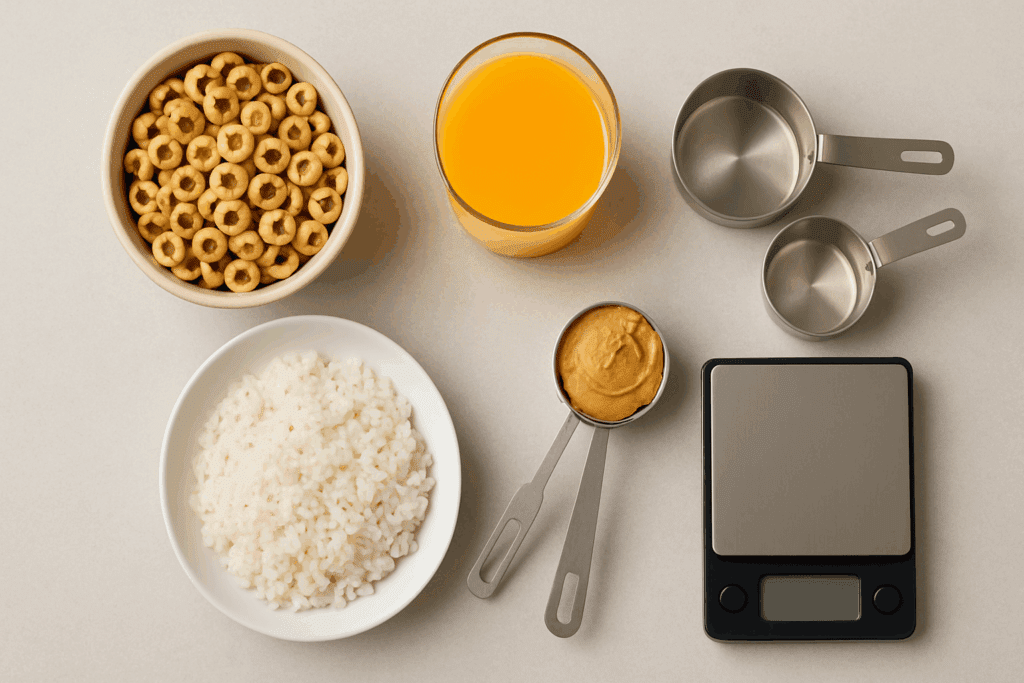
Selecting the Right Nutrition Facts Label Template for Your Needs
Not all nutrition label templates are created equal. Choosing the right template depends on your goals, audience, and level of detail required. For instance, if you are creating labels for commercial products, you must ensure that the template adheres strictly to FDA regulations, including font size, layout, and nutrient inclusion. However, if you’re using a nutrition facts label template for personal use or educational projects, you may have more flexibility in formatting.
Many online platforms offer a nutrition facts label template free for download, often in Word or PDF format. These templates are ideal for those looking for simplicity and speed, especially if they plan to print or share labels digitally. On the other hand, a more dynamic nutrition facts label generator might be better suited for individuals who want customizable layouts, automatic nutrient calculations, and options to save multiple versions. Whichever method you choose, ensure that your nutrition label template includes all the legally mandated fields and remains consistent with established dietary reference values.
Using a Nutrition Facts Label Generator to Streamline the Process
Manually calculating and entering nutritional data can be time-consuming, especially for complex recipes with multiple ingredients. This is where a nutrition facts label generator becomes an indispensable tool. These web-based applications allow users to input ingredients, quantities, and preparation methods, and then automatically calculate nutrient breakdowns and generate compliant labels.
A good nutrition facts label generator should be easy to use, reliable, and based on verified nutrient databases such as the USDA FoodData Central. It should allow you to upload recipes, specify serving sizes, and adjust for cooked versus raw measurements. Some advanced platforms also offer allergen declarations, ingredient lists, and bilingual labeling options. For home cooks and small business owners alike, these generators remove much of the guesswork, helping to produce accurate, FDA-style nutrition labels in minutes. When combined with a nutrition facts sheet blank, these tools can provide both structure and flexibility.
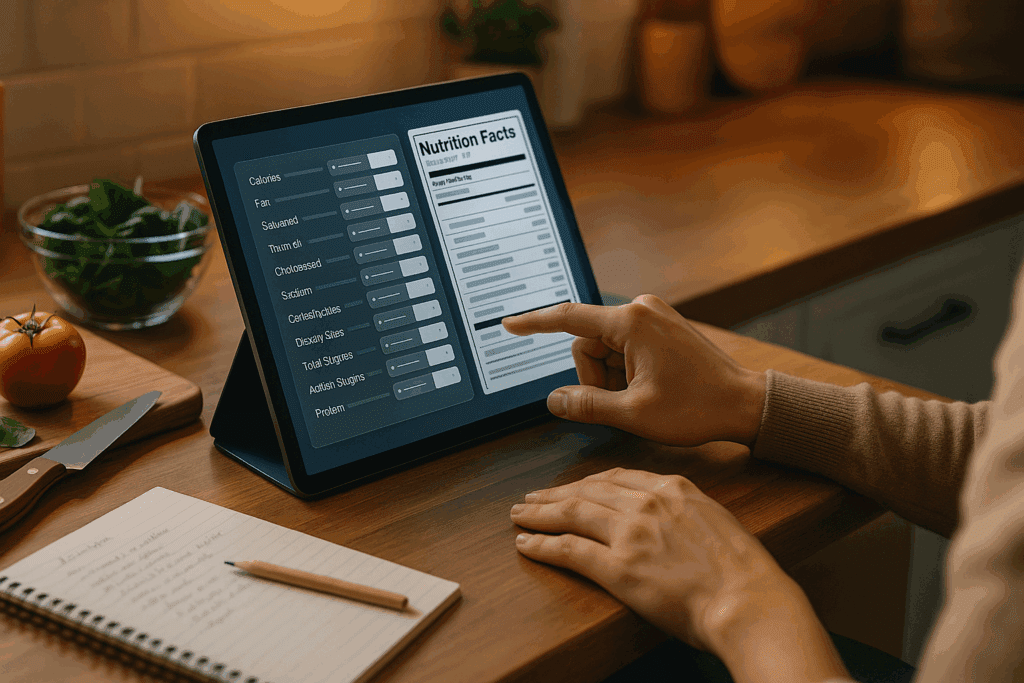
How to Calculate Nutrients for Your Homemade Recipes
Before you can populate a nutrition label template, you need accurate nutritional data. This starts with measuring each ingredient in your recipe as precisely as possible. Use a digital kitchen scale for weight-based measurements and consult standardized food databases for the nutrient values of raw and cooked foods. Pay attention to cooking methods, as boiling, roasting, or frying can alter the nutrient profile of ingredients.
Once each ingredient is accounted for, you can calculate the total nutritional content of the entire recipe. Divide these totals by the number of servings to determine per-serving values. This process becomes significantly more manageable with the help of a nutrition facts label generator, which automates much of the math. Make sure to double-check portion sizes and unit conversions, especially when using imported or specialty ingredients. An accurate outline of a fake nutrition label used for practice can also help you visualize how this data translates to a finished label.
The Importance of Formatting and Compliance in Nutrition Labeling
Even if your nutrition label is for personal or educational use, formatting matters. The FDA sets clear guidelines regarding how information should be presented, including font sizes, line spacing, and placement of nutrient information. If you’re selling food products under a cottage food law or at farmers markets, these rules become even more critical. Using a nutrition facts label template free of formatting errors ensures that your labels will be legible and professional.
Consistency is key. Whether you’re using a free nutrition facts template Word document or an online generator, your labels should look uniform across all your products. This enhances brand credibility and avoids consumer confusion. Additionally, consistent formatting helps ensure compliance if your product is ever subject to regulatory review. Templates and label generators that are pre-configured to meet these standards save time and reduce the likelihood of formatting issues.
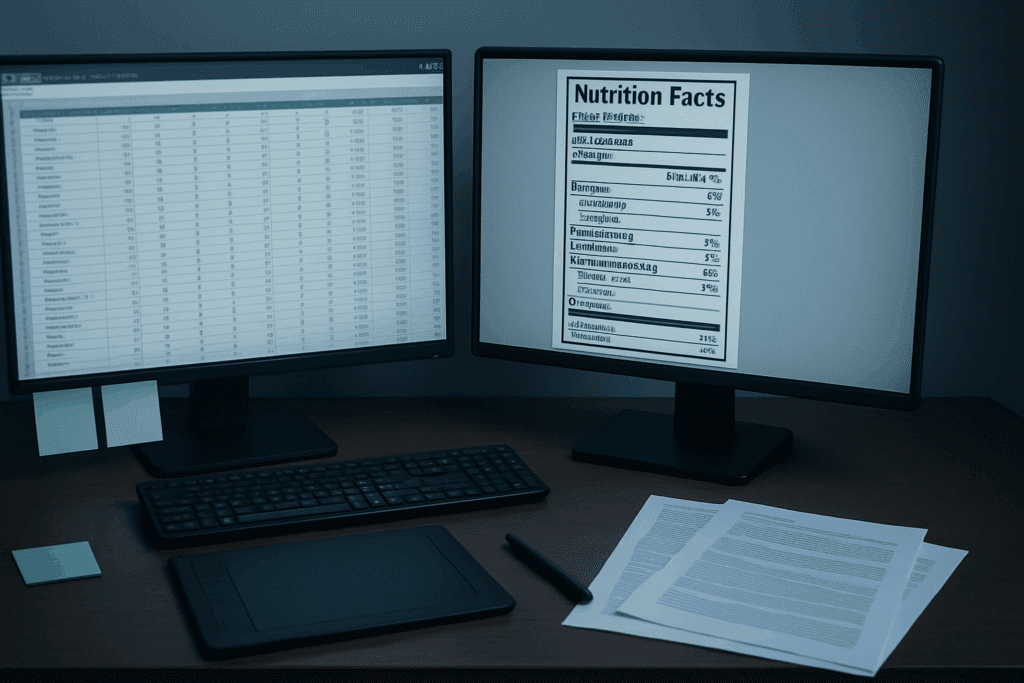
Integrating a Nutrition Facts Label into Your Packaging Design
Once you have created an accurate nutrition label, the next step is integrating it into your product’s packaging. Placement matters—not only for compliance but also for user experience. Consumers have come to expect nutrition facts to appear in a specific area on the back or side panel of packaging. Deviating from this convention can result in confusion or missed information.
Consider the aesthetics of your overall packaging design. Your label should complement your brand colors and typography while remaining clear and easy to read. Use high-contrast colors to enhance legibility, and avoid placing the label over textured or patterned backgrounds. If you are designing packaging yourself, inserting a nutrition label generated with a nutrition facts label generator or downloaded as a nutrition label template can be done using graphic design software such as Adobe Illustrator, Canva, or even Microsoft Word.
Benefits of Using a Free Nutrition Facts Template Word File
One of the most accessible options for home users is a free nutrition facts template Word file. These templates are easy to edit, print, and customize, making them ideal for personal projects or home-based food businesses. Because Microsoft Word is widely available and user-friendly, these templates lower the barrier to entry for those who may not be tech-savvy or have access to design software.
A free nutrition facts template Word document usually comes pre-formatted with all the standard elements of an FDA-compliant label. Users can simply plug in their values, adjust the font size if needed, and print the label for inclusion in their product packaging. For educators, these templates also serve as excellent teaching tools, helping students learn the structure and purpose of nutrition labeling through hands-on practice.
How to Spot an Inaccurate or Fake Nutrition Label
In a digital world where information can be easily manipulated, learning to identify inaccurate or fake nutrition labels is essential. These labels may contain exaggerated health claims, distorted portion sizes, or incorrect nutrient values. Some may use a deliberately misleading outline of a fake nutrition label to present an idealized view of the food’s healthfulness.
To ensure accuracy, always cross-reference the data presented on a nutrition label with reputable databases or conduct your own analysis using a trusted nutrition facts label generator. Check for inconsistencies in serving sizes, missing nutrients, or unrealistic calorie counts. A nutrition facts sheet blank used for practice can help you learn to assess these inconsistencies more effectively. Over time, developing a critical eye for such discrepancies will improve your ability to interpret and trust the labels you encounter.
Applications for Health, Wellness, and Diet Planning
Beyond compliance and packaging, creating your own nutrition labels can serve as a valuable tool for personal health and wellness. Individuals managing chronic conditions such as diabetes or hypertension can benefit from custom labels that provide detailed insights into sodium, sugar, and carbohydrate content. Athletes and fitness enthusiasts can use these labels to track protein intake, macronutrient ratios, and caloric balance.
Families with specific dietary preferences—such as low-FODMAP, vegan, or ketogenic—can tailor their labels to reflect the unique composition of their meals. The process of using a nutrition facts label generator to analyze and label home-cooked meals can help reinforce healthy habits and improve accountability. It also fosters a greater understanding of how ingredients and cooking methods affect the overall nutritional value of food.
Educational Uses of Nutrition Label Templates in Classrooms and Training
Nutrition facts label templates are also widely used in educational settings, from high school health classes to college-level nutrition and food science programs. A nutrition facts sheet blank serves as a starting point for assignments and projects, allowing students to practice labeling skills and apply theoretical knowledge. By working with a nutrition label template, students learn to identify nutrient-rich foods, evaluate portion sizes, and compare the healthfulness of different products.
In culinary schools, nutrition labeling is often integrated into coursework, helping future chefs understand how to balance flavor and nutrition. Dietetics and public health students use templates and generators to develop educational materials for community outreach. In all these scenarios, tools such as a free nutrition facts template Word file or a browser-based nutrition facts label generator make the learning process more interactive and engaging.
The Role of Technology in Advancing Home-Based Nutrition Labeling
Technological advancements have made it easier than ever to create accurate, professional-looking nutrition labels from the comfort of your home. Cloud-based platforms, mobile apps, and AI-powered databases now allow for seamless input, analysis, and generation of nutritional data. These tools often come with user-friendly interfaces that guide you through the process step by step, minimizing errors and optimizing accuracy.
Moreover, integration with smart kitchen devices and health trackers is on the horizon, potentially allowing users to sync their cooking habits directly with labeling software. This evolution makes nutrition labeling more dynamic, responsive, and personalized. The availability of nutrition facts label template free tools and resources ensures that these innovations remain accessible to a wide range of users.
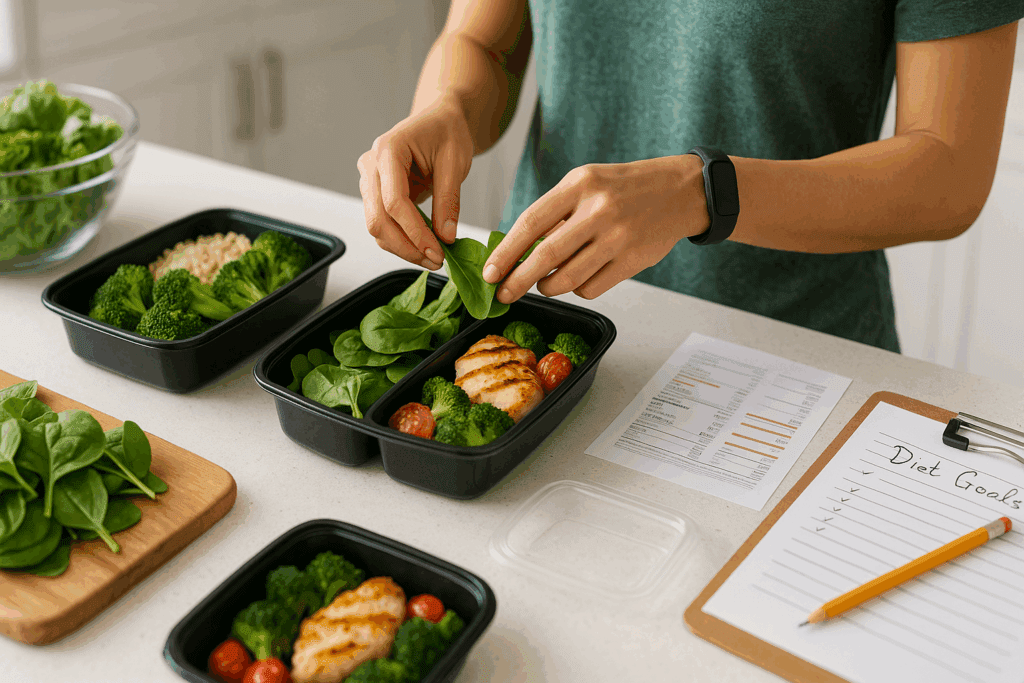
Frequently Asked Questions (FAQ): How to Create Accurate Nutrition Facts Labels at Home Using a Free Nutrition Facts Label Template
What are some of the lesser-known benefits of using a nutrition facts label template at home?
While most people use a nutrition facts label template to calculate basic nutrition data, one often overlooked benefit is its role in behavioral nutrition. Labeling home-cooked meals allows individuals to identify recurring dietary patterns, such as overuse of sodium-heavy condiments or a reliance on simple carbs. This awareness fosters more deliberate food choices. Moreover, keeping a digital record of meals through a template can aid in identifying trends that influence weight fluctuation or energy levels over time. When used consistently, a nutrition facts label template becomes more than a tool—it evolves into a nutritional diary that helps bridge daily habits with long-term wellness outcomes.
How can a nutrition facts label generator support individuals with specialized diets?
For individuals following highly specific eating plans like ketogenic, anti-inflammatory, or low-histamine diets, a nutrition facts label generator offers detailed nutrient tracking tailored to their unique goals. These tools allow for the pinpointing of micronutrients and macro ratios that can be difficult to monitor manually. For instance, someone managing inflammatory symptoms may track omega-6 fatty acid intake, which is often buried in broader fat totals. A generator provides the flexibility to highlight relevant fields and ignore non-essential ones, offering precision not easily found in traditional meal tracking apps. Over time, this level of control can play a pivotal role in managing symptoms and optimizing health.
Is a nutrition facts sheet blank still useful in today’s digital-first landscape?
Absolutely. A nutrition facts sheet blank remains a valuable resource, especially in educational, clinical, and therapeutic contexts. Nutritionists often use these forms during consultations to walk clients through interpreting their diets. The act of manually filling out a blank nutrition facts sheet can help reinforce learning, making it a tactile, cognitive experience rather than a passive data entry process. For parents or educators, using a blank sheet with children teaches label literacy from a young age, fostering lifelong nutritional awareness. Despite digital advances, the simplicity and flexibility of a printed blank form still hold practical relevance.
What should users be cautious of when using a free nutrition facts template Word document?
One key concern with a free nutrition facts template Word file is formatting inconsistencies when switching between devices or printers. Elements like line spacing, font size, or margins may shift, compromising the visual clarity of the label. Additionally, some templates may not be fully compliant with FDA standards, particularly when downloaded from lesser-known websites. It’s important to cross-reference the format with official guidelines to ensure accuracy. Users should also verify that nutrient fields are up to date, as daily values and labeling requirements can evolve over time. Maintaining template integrity helps ensure the resulting labels remain useful and professional.
Can an outline of a fake nutrition label be used constructively in a classroom or workshop?
Surprisingly, yes. An outline of a fake nutrition label serves as an excellent educational contrast tool when paired with real examples. In workshops, comparing a fabricated label to a verified one helps learners develop critical thinking skills around data accuracy, serving sizes, and deceptive marketing. Fake labels are especially effective in illustrating common errors, such as misaligned serving sizes or nutrient inflation. By using both fake and authentic outlines in classroom exercises, students gain hands-on experience distinguishing between credible and misleading information. This fosters deeper label literacy and equips future consumers to make informed choices.
How do nutrition label templates empower small food businesses and cottage industries?
For micro-entrepreneurs and home-based food vendors, nutrition label templates offer a cost-effective pathway to regulatory readiness. Rather than hiring a food scientist or agency, vendors can use a nutrition label template to create compliant, attractive labels on a limited budget. This democratization of labeling empowers more people—especially those in under-resourced communities—to enter the marketplace with confidence. It also enhances consumer trust, as labeled products communicate transparency and professionalism. By using resources such as a nutrition facts label template free of charge, businesses can build reputability from day one.
What future innovations could improve the usability of a nutrition facts label generator?
The next generation of nutrition facts label generators may incorporate real-time AI-driven feedback, suggesting recipe modifications for improved nutritional balance. For example, a generator might prompt users to reduce saturated fat by recommending ingredient swaps. Integration with kitchen devices and wearable trackers is also likely, creating a seamless feedback loop between eating behavior and nutritional analysis. Additionally, cloud-based storage may allow users to track longitudinal changes in nutrient intake across months or even years. These innovations would take label creation from a static task to a dynamic, personalized wellness experience.
Are there legal risks associated with misusing a nutrition facts label template?
Yes, particularly when products are sold commercially. Mislabeling a product using an inaccurate nutrition facts label template could lead to consumer complaints or even regulatory fines. Small businesses using a nutrition facts label template free from online sources should ensure their final labels align with FDA formatting and content rules. Inaccurate or incomplete data can also expose vendors to liability if health-related claims are misrepresented. Taking the time to double-check nutrient data, serving sizes, and allergen declarations is essential. Legal compliance not only protects the business but also reinforces consumer confidence.
What practical steps can be taken to avoid inaccuracies when using a nutrition facts label template?
To minimize error, users should first standardize ingredient measurements using a digital kitchen scale and avoid approximations. Cross-reference each ingredient’s nutrient values against authoritative databases like USDA FoodData Central rather than generic online listings. If using a nutrition facts label generator, select platforms that allow manual overrides in case adjustments are needed. Save multiple drafts of your labels and perform a side-by-side comparison with a verified nutrition facts sheet blank. Regularly revisiting your label creation process ensures consistency, accuracy, and alignment with evolving dietary guidelines.
How can nutrition education programs leverage a free nutrition facts template Word document?
Nutrition educators often face budgetary constraints, making freely available tools like a free nutrition facts template Word document invaluable. Instructors can customize these templates for specific lessons, whether teaching about macro distributions or sodium management. Using templates during interactive activities—like labeling a student’s lunchbox or analyzing fast food—creates memorable, applied learning experiences. Templates also make assignments more inclusive by allowing students without advanced software access to participate fully. Ultimately, these resources democratize nutrition education, bringing professional-grade learning tools to the classroom with minimal cost.

Conclusion: Empowering Health-Conscious Choices with Nutrition Labeling Tools
In a world increasingly driven by informed choices, the ability to create accurate nutrition facts labels at home is more than a convenience—it is a form of empowerment. Whether you’re a health enthusiast tracking your meals, a parent managing dietary needs for your family, or a budding food entrepreneur, access to a reliable nutrition facts label template and user-friendly tools can elevate your nutritional literacy and culinary creativity. Leveraging a nutrition facts label generator removes barriers, streamlining the process and ensuring data accuracy.
From editable formats like the free nutrition facts template Word document to web-based resources offering a nutrition facts label template free of charge, there are more options than ever to support accurate, accessible labeling. As you build skills in interpreting and creating labels, you not only improve your own health but contribute to a culture of transparency and well-being. A blank nutrition facts sheet becomes more than a template—it becomes a canvas for responsible nutrition and conscious eating, bridging the gap between food production and personal health. By integrating accurate labeling into daily life, we take a vital step toward better understanding what we eat, fostering habits that support long-term wellness for ourselves and our communities.


